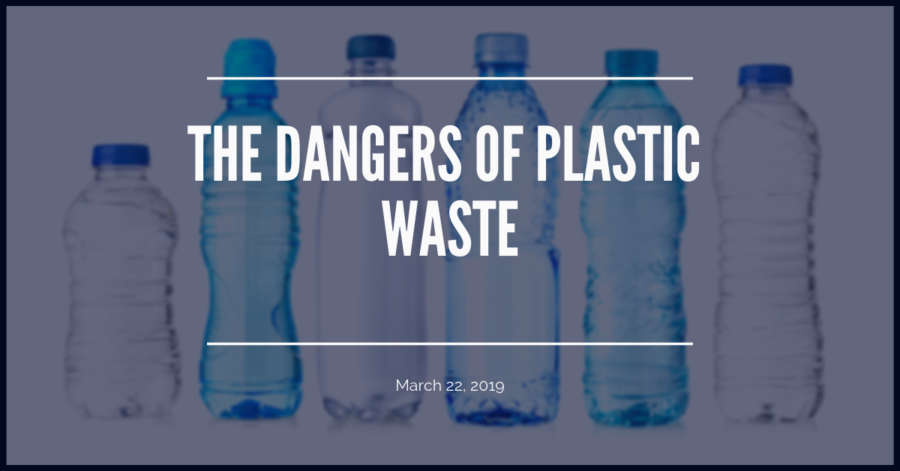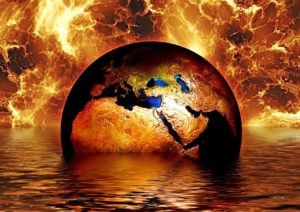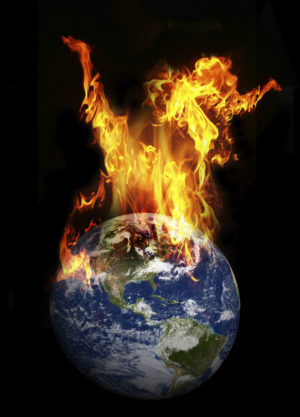The Dangers of Plastic Waste
March 22, 2019
When we think about dangers, we imagine something close to home such as car accident or drunk driving; what we don’t think about is something that affects us both at home and abroad, the very plastic that we use almost everyday could be one of the most dangerous items you come across daily.
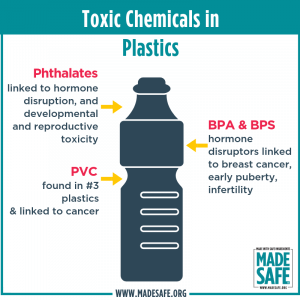
Common plastics, such as water bottles, contain toxic chemicals such as Phthalates which are linked to hormone disruptions, both BPA and BPS which are also linked to hormone disruptions, breast cancer, early puberty and infertility. PolyVinyl Chloride, PVC, is also found in many plastics and is linked to causing several types of cancers.
The threat of plastic has been growing steadily through out recent decades, we are now producing roughly 300 million tons of plastic each year, half of which is used for single use, with nearly eight million tons being dumped into the world’s oceans.
This also causes a problem, plastic is not biodegradable and just continues to break down into smaller and smaller pieces, not just in landfills but the ocean as well.
“Plastic waste in the oceans is affecting the food webs because the plastics mimics the food of animals. For example a floating plastic bag looks similar to a jellyfish. When an animal eats enough plastic, it pushes on the walls of the stomach signaling that the animal is food and it stops eating. However, there are no nutrients in plastic so the animal eventually starves to death. We are seeing this more and more and the entire ocean food web is impacted,” explained AP Biology teacher, Mary Neimeyer.
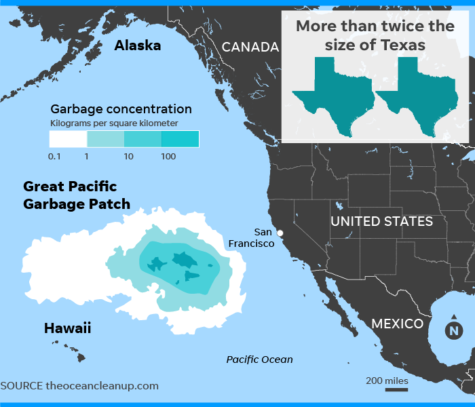
Via USA Today
The largest deposit of plastic in the ocean, located between Hawaii and California, is called the Great Pacific Garbage Patch made of nearly 1.8 trillion pieces of plastic.
Not only is plastic a threat in the ocean and during everyday use but, once thrown away plastic continues to cause issues for both the environment and the health of earths inhabitants.
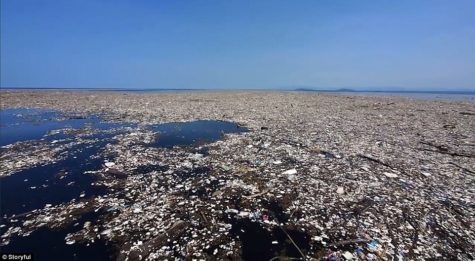
https://phys.org/news/2017-11-trash-islands-central-america-ocean.html
The United States has over 3,000 active landfills that accumulate for plastic by the day. Being out in the exposed to UV rays breaks down the plastic and causes the chemicals to seeps into the ground water; further introducing our systems to the toxic chemicals.
Along with its physical dangers, plastics also causes an economic danger. The pollution of plastic harms economic fields such as tourism, business, as well as fishing.
While damage has already been done to not only ourselves, but our planet there is still ways that we can help prevent further issues.
Recycling is a huge deterrent to plastic waste however, only roughly 9% of plastic is recycled every year.
“In addition to reducing our plastic consumption, a greater financial incentive to recycle would reduce the plastic in our oceans,” said Neimeyer. ” The five cents per bottle we get for recycling today was set in the 1970’s and hasn’t changed with inflation.If it had, we’d get 25 cents for each bottle recycled. There’d be a lot less [plastic] around campus if four [plastic bottles] equaled a dollar.”
In addition to recycling, students can do their part by using reusable water bottles and pushing for refillable water stations on campus.
Comment down below what your doing to help prevent further damage caused by plastic waste.

